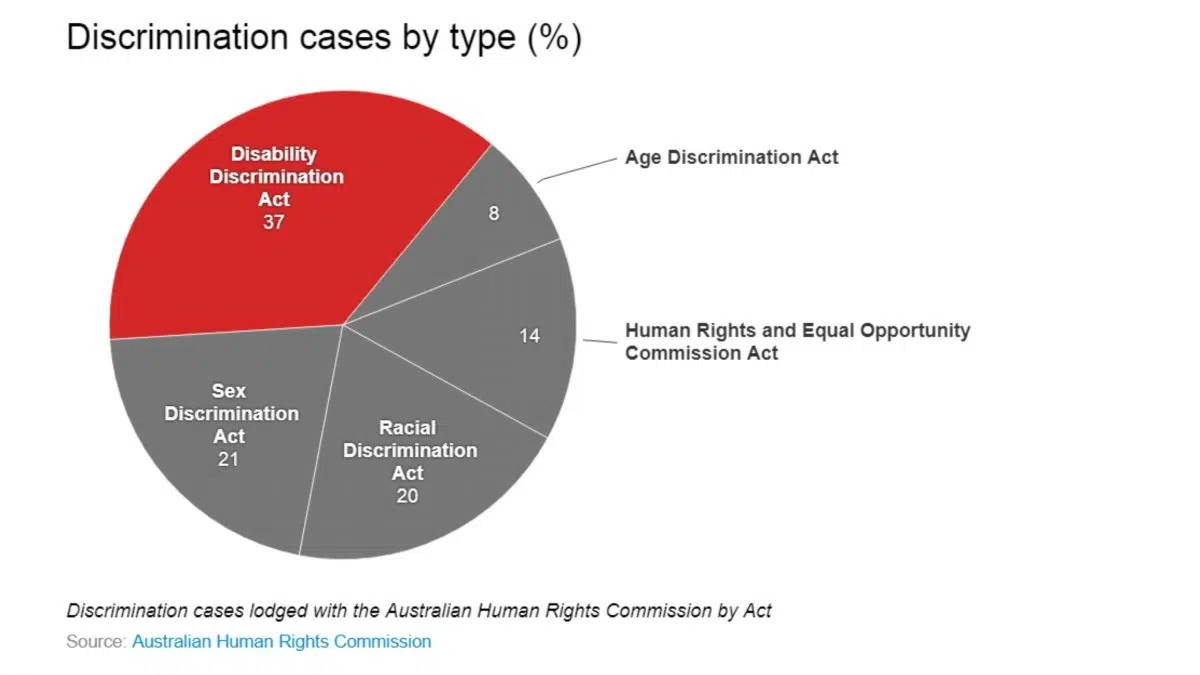A frequently asked question from our readers is how to improve their compliance with Equal Employment Opportunity.
The Australian Human Rights Commission receives more than 2,000 complaints each year in relation to discrimination and sexual harassment in Australian workplaces.
What does Equal Employment Opportunity Mean?
Equal Employment Opportunity means a commitment to a workplace that treats people fairly and with respect. A commitment to create a workplace that is free from discrimination, sexual harassment, unlawful adverse action and victimisation and one that also embraces diversity.
Federal and state/territory laws of Australia protect the rights of individuals and ensure safe workplaces and fair and equitable treatment.

When it comes to preventing workplace discrimination and creating equal employment opportunity it is very important to understand the different personal characteristics that are protected by law. Diversity in the workplace means having employees from a wide range of backgrounds, such as:
- Age
- Gender
- Ethnicity
- Physical ability
- Sexual orientation
- Religious belief
- Work experience
- Educational background
These are the 5 Best Practices For an Effective EEO Program You as an Employer Shouldn’t Ignore:
1. Understanding Vicarious Liability as well as its effects on the mental health of your current and potential future employees
The absence of equal employment opportunity standards not only puts you at risk of claims for legal liability amounting to thousands of dollars but also affects the mental health of employment seekers and your employees, contractors and volunteers.
In other words, you should invest time in clearly defining why EEO is important for your organisation, in addition to the key reasons why it is important to define your obligations and the various barriers that might compromise equity and diversity at your workplace. Assistance can be obtained from professional HR consultants or groups under the EEO Commonwealth Opportunities Act.
You can find out a little more about vicarious liability and what it means to take all reasonable steps.
2. (Re)Educating
Education is the key; you need to educate your workforce on the role they play in creating a workforce that is discrimination-free. The most effective way to do that is through interactive online workplace compliance courses. Create policies that go in accordance with the EEO standards and deploy refresher training at fixed intervals to ensure the knowledge is applied.
3. Recognising the types of behaviour that are discrimination
When it comes to workplace discrimination, not all kinds of discrimination are easy to identify. Subtle behaviours like unequal work assignments, discrimination while promoting, not being invited to parties, leering, and unwanted compliments are all kinds of workplace harassment that should not be ignored.
4. Saying No to Victim Shaming
In the latest report by the Australian Human Rights Commission, only 17% of employees who faced sexual harassment went on to report it. The major reason for this is the fear of victim shaming, where the victim is further humiliated and threatened.
As a responsible employer, you should create an environment that makes your employees feel safe, secure and supported, one that encourages them to speak up if things are not right.
5. Focusing Extensively on the Managers
Your front-line, mid-line and senior managers are the first avenue to the employees subjected to workplace discrimination incidents. Thus, they should be trained extensively on workplace discrimination policies and procedures, so they can effectively provide support to the victim along with dealing and reporting the issues. A robust workplace relations and safety program will include legally written online compliance courses, up-to-date workplace policies and a team of trained supervisors and managers, supported by qualified HR practitioners, who are able to follow your policies and procedures, with support where required, to ensure that incidents of workplace harassment, bullying and discrimination are attended to in a compassionate, professional and lawful way.
The goal of a proper workplace compliance program in your workplace is to reduce the incidents of unprofessional conduct. However, it is also to ensure that if there is an incident, people will address it either themselves or by reporting to somebody else in a position of authority or support so the matter can be resolved before it becomes something even bigger. Having such a program in place will also mitigate the risk of legal liability associated with unlawful workplace behaviour.
Companies that embrace a diverse workforce know about individual employee differences, and the contributions made by people of different abilities are one way to develop a competitive advantage. Having a diverse workforce also enables a company to keep up with the changes occurring in today’s competitive environment. Companies with diverse workforces demonstrate to everyone that they are serious about corporate social responsibility and getting a shared view of the world.
This online equal employment opportunity training can be completed as a stand-alone EEO training course or in conjunction with the full compliance management software – You can contact- Sentrient to find out more.
Get a free demo or reach out to us for a conversation about your specific needs.
You can also purchase the Sentrinet online workplace compliance system.





